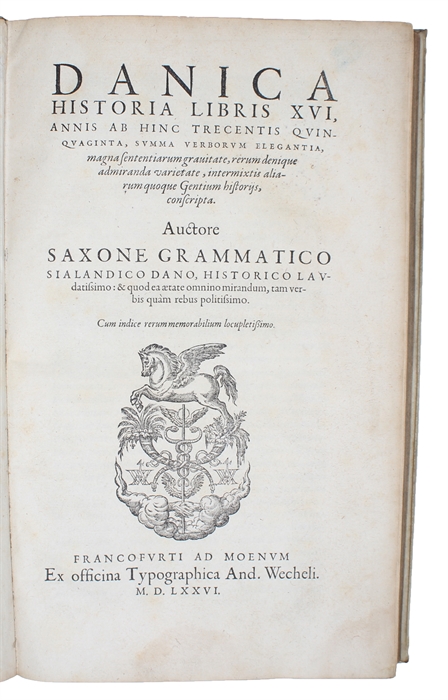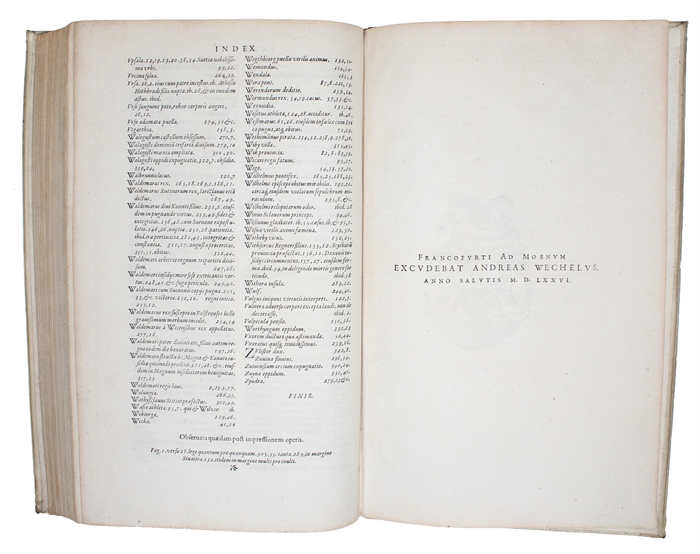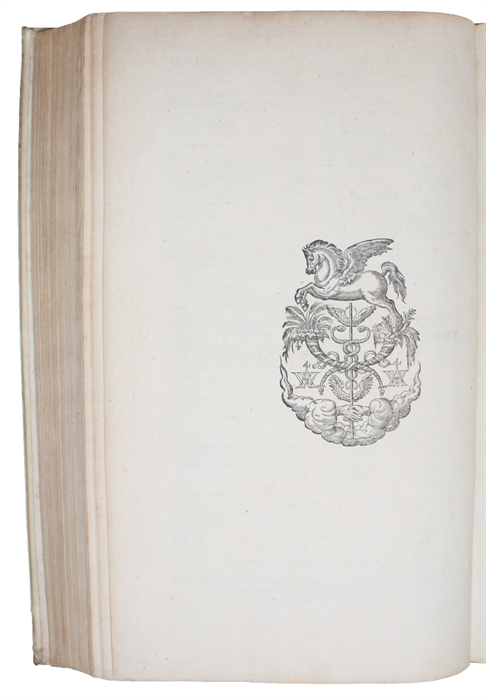[SAXO GRAMMATICUS]. SAXONE GRAMMATICO.
Danica historia libris XVI, annis ab hinc trecentis qvinqvaginta summa verborum elegantia, magna sententiarum grauitate, rerum denique admiranda varietate, intermixtis aliarum quoque Gentium historijs, conscripta.
Frankfurt am Main, And. Wechel, 1576.
Folio. Contemp. full vellum. (8), 342, (24),(2) pp. Last leaf with printers woodcut device (also on title-page). 3 exlibris from previous owners on inside front cover. faint browning to foot of title-page. Internally clean and fine, and wide-margined.
Third and last 16th century Latin edition of Saxo's "History of Denmark", edited by Philip Loncier, rector of the Frankfurt Gymnasium.
Saxo Grammaticus (ab. 1150-1220) was probably a secular clerk or secretary to Absalon, Archbishop of Lund, the great Danish churchman, statesman and warrior. Saxo is remembered today as the author of the first full history of Denmark, in which he modeled himself on the classical authors (e.g. Virgil, Plato, Cicero) in order to glorify his fatherland. The work dates from the end of the 12th century and was edited by Christiern Pedersen, a Canon of Lund, and printed by Jodocus Badius Ascendius in Paris in 1514 (the editio princeps) with 16th century re-issues following in 1534 (Basel) and 1576 (the present). Only with the first printing of this seminal work did the work become known throughout academic circles. The work soon received international fame and is to this day renowned as not only being immensely important historically, but also being extremely well written (Saxo is praised by Erasmus, for instance, for possessing great power of eloquence).
The work consists of sixteen books that cover the time from the founders of the Danish people (Dan I of Denmark) till Saxo's own time, ending around 1185 (with the submission of Pomerania), when the last part is supposedly written. The work thus covers the entire history of Denmark until Saxo's own time, seen under a somewhat glorified perspective, from heathen times with tales of Odin and the gods of Valhalla to the times of Absalon, who probably directly influenced the sections on the history of his own time, working closely with Saxo himself. Apart from that, the work contains the first known written narration of the legend of Hamlet (Amleth, the son who took revenge for his murdered father). It is most likely this narrative of Saxo's, which he based on an oral tale, that forms the basis for Shakespeare's "Hamlet", which takes place in Helsinore in Denmark. There is fairly certain evidence that Shakespeare knew Saxo's work on the History of Denmark and thus, from that, the legend of Amleth.
The editio princeps was printed in Paris in 1514, the second edition being printed in Basel in 1534.
LN 1450
Thesaurus 190.
Order-nr.: 49921




